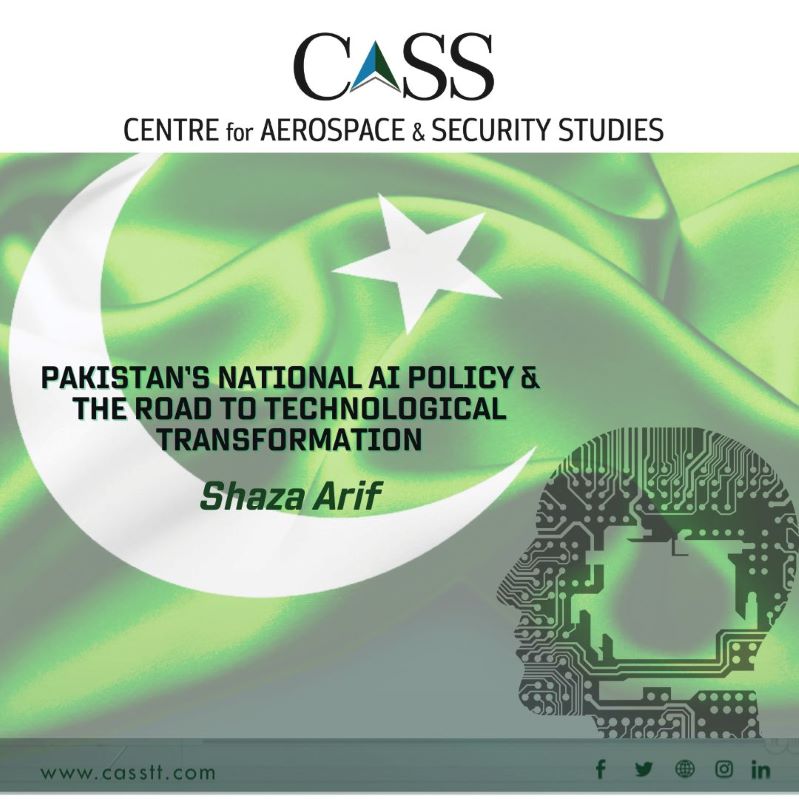In an era marked by technological innovations and significant breakthroughs across different sectors, defying the bounds of our expectations, the transformative prowess of Artificial Intelligence is shaping a whole new reality. For this reason, states worldwide are awakening to the never-ending potential of this technology, which is evident from the fact that many countries have already launched their national AI policies in this regard, with 69 countries having active policy initiatives.
Over the last few years, it has been repeatedly highlighted at various events that Pakistan needs to be more receptive towards AI and embark upon its exploration to ensure national competitiveness and improve the life of its citizens. Finally, the state has shown its inclination towards embracing the possibilities of this technology, as shown by the launch of the National AI Policy of Pakistan by the Ministry of Information Technology & Telecom (MoITT) last week.
The 41-page document highlights the goals of instilling AI competencies and transforming Pakistan into a technology-empowered nation. The policy aims to create public awareness about AI; develop skilled human capital and upskill the existing workforce; invest in research and development; establish a national AI fund; invest in more centres of excellence of AI; build better infrastructure for AI and allied technologies. It also pushes for launching national projects in AI to address social and civic problems; ensuring responsible behaviour in its use; developing regulatory mechanisms; promoting best practices; and supporting accessibility to AI models. Finally, it aims to transform the public sector with AI, provide sectorial support and enable academia with the technology.
At its core, the policy directives are based on four pillars, i.e. Market Enablement; Creating AI Awareness & Readiness; Building a Progressive & Trusted Environment; and Transformation and Evolution.
Launching the ‘National AI Policy’ is a positive development and was a crucial requirement. The policy is relatively comprehensive and provides a detailed roadmap regarding integrating the technology across various sectors. It is worth noting that it particularly aims to transform areas such as agriculture and manufacturing, which are profoundly significant to Pakistan’s economic landscape. The emphasis on employment of AI in public services, including healthcare, education and the citizens’ portal; and may make public service delivery more efficient. Moreover, it is also very encouraging to see that the inclusion of women in the trajectory towards AI has been prioritised in the policy document.
Drafting the policy has marked an important chapter; equally important now is its subsequent implementation. However, towering challenges lie ahead on the path to realising the policy’s potential and witnessing positive results in Pakistan. First, the policy has been formalised in the absence of specific data laws, thereby raising doubts about its credibility. Moreover, apart from MoITT, relevant ministries such Ministry of Defence and Ministry of Science and Technology also need to be proactively consulted, otherwise one becomes doubtful about the seriousness of the policy suggestive of lack of coherent effort. In addition, the proposed timelines appear considerably tight, making implementation a tenuous, if not unrealistic task. Complicating matters further, Pakistan is facing economic challenges which could impede seamless AI integration.
Pakistan is also encountered with human resource problems vis-à-vis AI. It requires a better-trained workforce, skilled in domains such as machine learning, programming and data science to put the state in a better position to unleash the possible benefits. However, a survey conducted in 2022 revealed only a trivial number, i.e., less than 10 percent of the IT and commuting workforce, were found to be adept with this technology. Recognising this pressing need, the AI policy aims to train a million IT graduates in AI and related technologies by 2027, which is somewhat of an ambitious plan. Compounding the issue, is the persistent challenge of ‘brain drain’, whereby talented individuals migrate to seek better opportunities in other countries. Furthermore, in the rural areas of Pakistan, the infrastructure to support AI deployment is far from adequate, hindering the adoption of AI technologies in the foreseeable future. Although the policy emphasises more Public-Private Partnerships (PPPs), the intricate dynamics of the process is an unfortunate story in itself with numerous obstacles and structural challenges. It is also surprising that the defence angle is largely absent in the policy document, disregarding the fact that AI’s potential role is one of the most pressing issues pertaining to militaries around the world. Lastly, the review section of policy implementation is not unconvincing and appears weak, which raises questions about its practicality and effectiveness over the short- and long-term. Implementation requires a futuristic vision and persistent efforts beyond the political cycle to realise the objectives drafted – something that would require a strong commitment towards the cause, regardless of who is in power. Hence, there is still a long way to go before Pakistan can gain socioeconomic benefits from this innovative frontier.
Hence, Pakistan’s road to AI is paved with unprecedented opportunities and formidable challenges. Treading this path requires the utmost sincerity by the whole state. The country needs a multistakeholder approach involving the government, industry, academia and civil society for progress in this domain. Nevertheless, it is a path worth pursuing safely, responsibly and with a pragmatic approach.
Shaza Arif is a Research Assistant at the Centre for Aerospace & Security Studies (CASS), Islamabad, Pakistan. The article was first published in the News International. She can be reached at: [email protected]
Design Credit: Mysha Dua Salman





